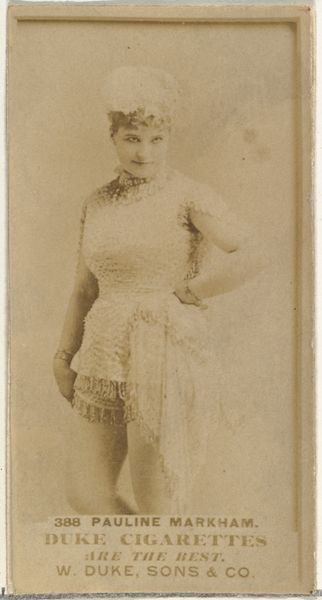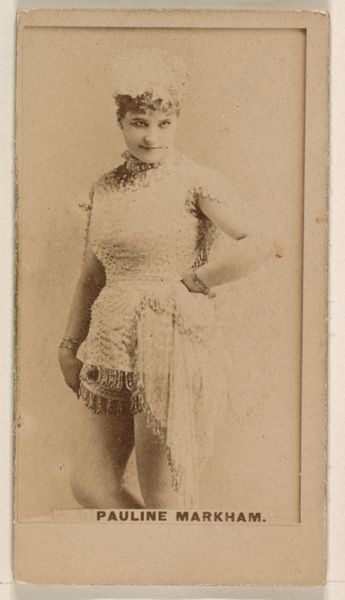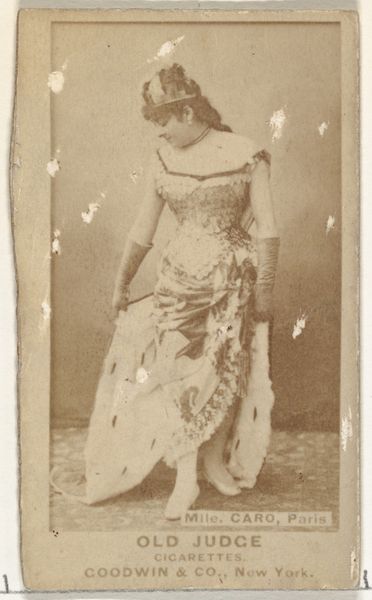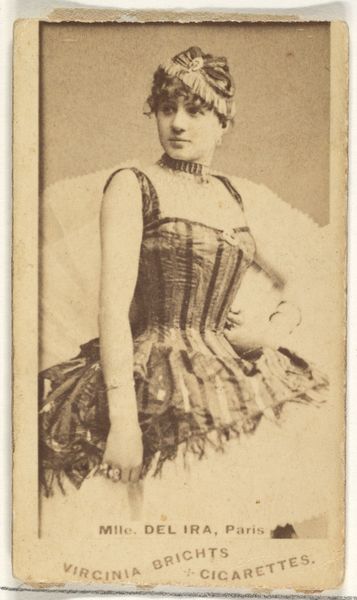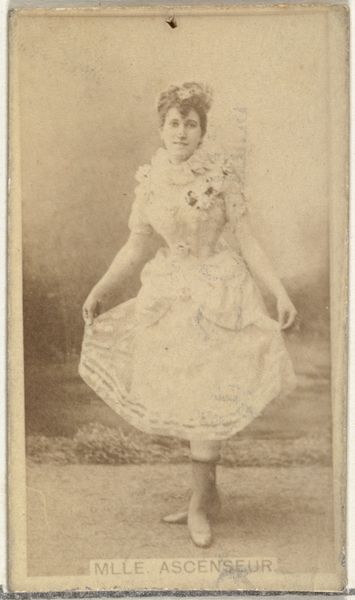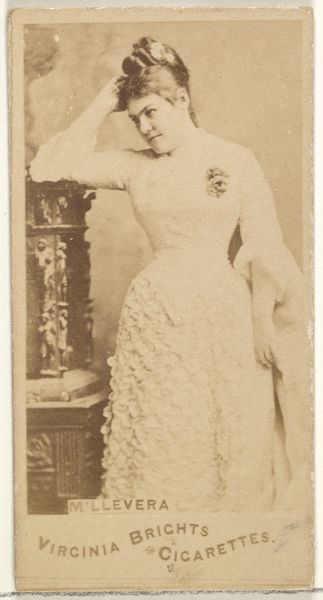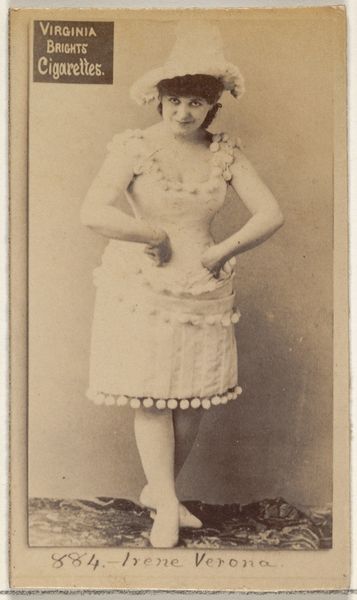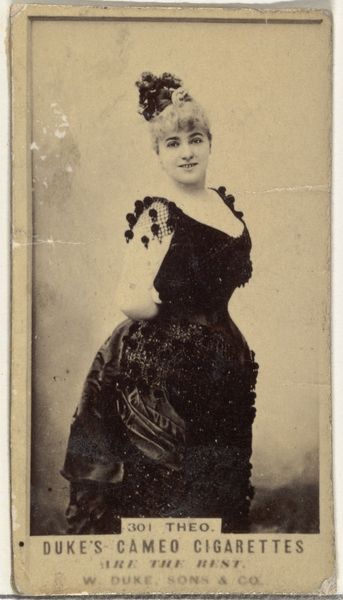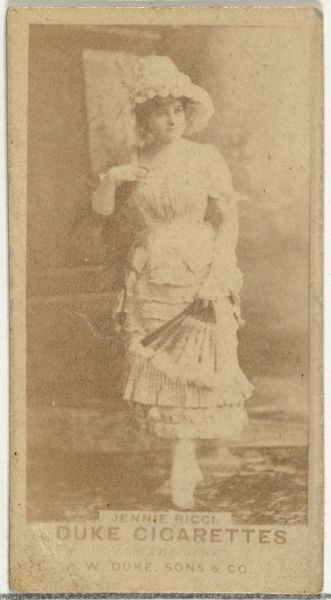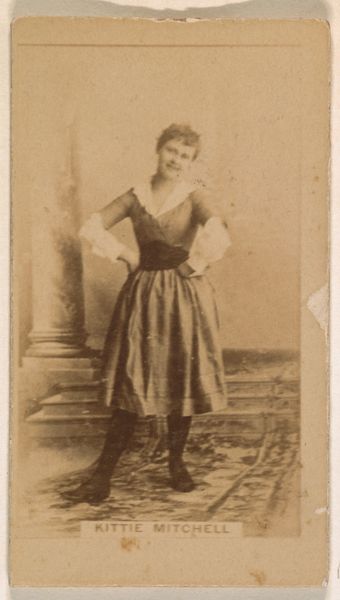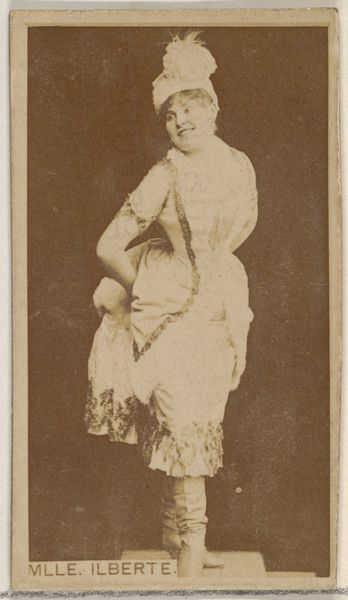
Card Number 388, Pauline Markham, from the Actors and Actresses series (N145-5) issued by Duke Sons & Co. to promote Cameo Cigarettes 1880s
0:00
0:00
drawing, print, photography
#
portrait
#
drawing
# print
#
photography
Dimensions: Sheet: 2 11/16 × 1 3/8 in. (6.8 × 3.5 cm)
Copyright: Public Domain
Curator: This is a trade card from the 1880s, “Card Number 388, Pauline Markham,” part of the “Actors and Actresses” series created by Duke Sons & Co. to advertise Cameo Cigarettes. Editor: The sepia tones give it such a delicate, ghostly feeling. It’s like peering into a bygone era of stage glamour. But also, it’s clearly… advertising? Curator: Exactly. The photograph, almost certainly printed using albumen paper for that soft tonal range, was affixed to a card for mass distribution. The convergence of entertainment and commerce is explicit. Markham, a celebrated performer, lends her image to sell tobacco. This fusion says a lot about shifting cultural values, about the performance of persona and its commercial possibilities. Editor: And it collapses the boundaries. Is it portraiture? Advertising? The value here really lies in its social function and context. Who made it, who bought it, and what were they buying into, really? I think that process has some serious artistic value beyond the representation of her image as we think about art objects. Curator: Absolutely. Markham herself becomes a signifier. Note her posture: the slight smirk, the hand on her hip—it suggests confidence, daring. The overall aesthetic ties into prevailing societal notions of beauty and femininity that have had echoes throughout art history. These commercial images can encode prevailing archetypes or, potentially, challenge them. Editor: The material speaks too. It’s so fragile. Consider how many were printed versus how few have survived. The ephemeral nature reflects the transient fame associated with performance itself but also underscores how value changes, based on scarcity and cultural interest. I wonder what Markham herself would have thought of her image being used this way. Curator: Perhaps she saw it as part of the performance, as a symbol, as an affirmation of her position in a growing culture that consumed images. It's a multifaceted piece of ephemera that encapsulates performance, commodification, and visual communication—and of course that cultural fixation on the beauty of Pauline Markham, then as now. Editor: Definitely more than meets the eye on this little scrap of cardboard. It speaks volumes, not just about artistry, but about production, labor, and how that's tied to value and, in its own way, how art and image can become democratized and easily distributed on the street.
Comments
No comments
Be the first to comment and join the conversation on the ultimate creative platform.
